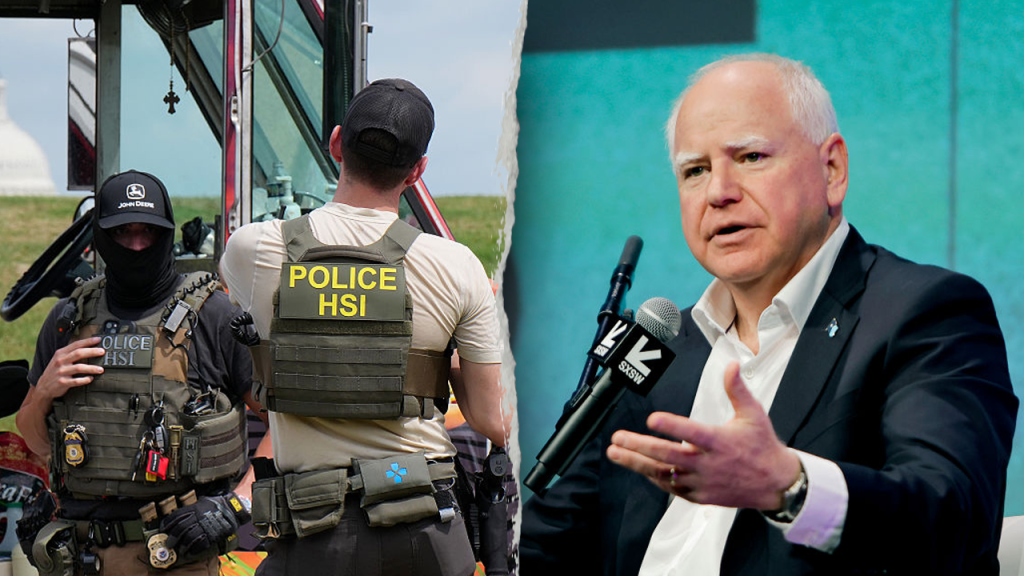ICE’s Expanding Detention Network May Include Minnesota, Raising Questions About State Authority
In a significant shift in federal immigration enforcement, the Department of Homeland Security is rapidly expanding its detention facility network across the country, with Minnesota potentially becoming the latest state to host an ICE detention center. This development comes as part of a broader federal initiative that has already established major facilities in Florida, New Jersey, Texas, and other states, signaling an aggressive approach to immigration enforcement under the current administration.
The Prairie Correctional Facility in Appleton, Minnesota, near the South Dakota border, has emerged as a potential site for ICE operations. This private prison, which has been inactive for over a decade and was effectively rendered obsolete by a 2024 Minnesota law prohibiting non-governmental state penitentiaries, might find new purpose under federal authority. According to Minnesota Public Radio News, while local Appleton officials deny current communications with ICE, the facility’s owner—who operated it until its closure in 2010—is actively pursuing a federal contract. This situation highlights a significant legal nuance: while Minnesota state law prohibits private prison operations for state purposes, it apparently does not restrict federal usage of such facilities. This places Democratic Governor Tim Walz in a potentially uncomfortable position, given his previous vocal opposition to Trump-era immigration enforcement policies during the 2024 presidential campaign.
The Minnesota facility is just one among many locations being considered or already repurposed for immigration detention across the country. A comprehensive map published by the Washington Post identified numerous current and potential future ICE facilities, including the controversially named “Alligator Alcatraz” in Ochopee, Florida—a facility currently in limbo following an intervention by an Obama-appointed judge. In Texas, the Reeves County Detention Center in Pecos, one of the world’s largest private prisons with a capacity of 3,700 beds, already houses ICE detainees among its inmate population. Additional documents reviewed by the Post revealed plans for a “Brownsville Family” facility near the Texas border with a planned capacity of 3,500 people. The federal government has also repurposed part of Fort Bliss in El Paso for immigration-related detentions, a move that drew fierce criticism from the local ACLU chapter, which compared the action to the internment of Japanese Americans under President Franklin Roosevelt.
The trend extends to other traditionally Democratic-leaning states as well. In California, plans are underway to house ICE detainees at another former private prison in California City, outside Bakersfield. CoreCivic, the same vendor operating the Minnesota facility under consideration, has reached an agreement with federal authorities to repurpose its 2,560-bed facility in California. This development creates tension with Governor Gavin Newsom’s policies, as his 2019 ban on private prisons was ultimately deemed unconstitutional by federal courts when applied to federal operations. Meanwhile, in the Northeast, the largest ICE detention center is located near Penn State in Philipsburg, Pennsylvania—the Moshannon Valley Processing Center, another privately-contracted facility with capacity for approximately 1,800 people.
These developments reflect a dramatic expansion of immigration enforcement infrastructure, with Texas, Louisiana, and California currently ranking as the top three states for migrant detentions. According to reporting by the Washington Post, at least 19 states could have active detention facilities or the capacity for them by the beginning of next year. This rapid scaling up of detention capabilities raises significant questions about federal-state relationships, particularly in states where governors or legislatures have previously taken positions opposing such facilities or the immigration enforcement approaches they represent.
The expansion of ICE detention facilities into states led by governors who have opposed aggressive immigration enforcement creates a complex political dynamic. For leaders like Walz in Minnesota and Newsom in California, the federal government’s ability to override or circumvent state restrictions on private prisons highlights the limits of state authority when confronted with federal immigration policy. As these facilities continue to open or be repurposed across the country, the tension between state autonomy and federal immigration enforcement priorities will likely remain at the forefront of political discourse. The situation underscores the challenging balance between federal authority and state rights in addressing immigration—a perennial issue in American governance that continues to evolve as administrations change and policies shift.


